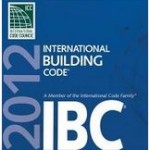International Residential Code and Tension Ties
Reader DENNIS in TRAVERSE CITY writes:
“ICC R602.10 is written to work with continuous foundations and vertical studs, not posts in holes and horizontal girts.
How does a person translate bracing into post-frame language?
An answer addressing tension ties would be helpful.”
From the 2015 International Residential Code (IRC):
R602.10 Wall bracing.
Buildings shall be braced in accordance with this section or, when applicable, Section R602.12. Where a building, or portion thereof, does not comply with one or more of the bracing requirements in this section, those portions shall be designed and constructed in accordance with Section R301.1.
R602.12 Simplified wall bracing.
Buildings meeting all of the conditions listed below shall be permitted to be braced in accordance with this section as an alternate to the requirements of Section R602.10. The entire building shall be braced in accordance with this section; the use of other bracing provisions of Section R602.10, except as specified herein, shall not be permitted.
- There shall not be more than three stories above the top of a concrete or masonry foundation or basement wall. Permanent wood foundations shall not be permitted.
- Floors shall not cantilever more than 24 inches beyond the foundation or bearing wall below.
- Wall height shall not be greater than 10 feet.
- The building shall have a roof eave-to-ridge height of 15 feet or less.
- Exterior walls shall have gypsum board with a minimum thickness of ½ inch installed on the interior side fastened in accordance with Table R702.3.5.
- The structure shall be located where the ultimate design wind speed is less than or equal to 130 mph and the exposure category is B or C.
- The structure shall be located in Seismic Design Category A, B or C for detached one- and two-family dwellings or Seismic Category A or B for townhouses.
- Cripple walls shall not be permitted in three-story buildings.
Buildings and structures, and parts thereof, shall be constructed to safely support all loads, including dead loads, live loads, roof loads, flood loads, snow loads, wind loads and seismic loads as prescribed by this code. The construction of buildings and structures in accordance with the provisions of this code shall result in a system that provides a complete load path that meets the requirements for the transfer of loads from their point of origin through the load-resisting elements to the foundation. Buildings and structures constructed as prescribed by this code are deemed to comply with the requirements of this section.
Please keep in mind, the IRC is a prescriptive code – it calls out the approved methods to put a stick framed building together, within the prescribed load parameters. Post frame (pole) buildings are NOT covered by the IRC, other than:
R301.1.3 Engineered design.
Where a building of otherwise conventional construction contains structural elements exceeding the limits if Section R301 or otherwise not conforming to this code, these elements shall be designed in accordance with accepted engineering practice. The extent of such design need only demonstrate compliance of nonconventional elements with other applicable provisions and shall be compatible with the performance of the conventional framed system. Engineering design in accordance with the International Building Code is permitted for buildings and structures and parts thereof, included in the scope of this code.
Accepted engineering practice and in accordance with the International Building Code would lead your RDP (Registered Design Professional – Architect or Engineer) to utilize the NFBA (National Frame Building Association) Post-Frame Building Design Manual Second Edition.
While it is possible a design utilizing tension ties could be done, it is probably far more practical to utilize the strength and stiffness of properly fastened steel panels to transfer shear loads from the roof through the endwalls to the ground.







